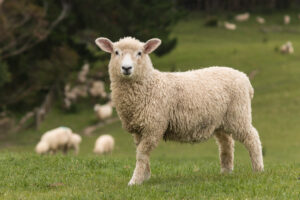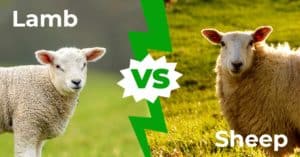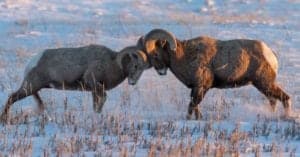Over time, humans have successfully domesticated a small number of the world’s animal species. Some of the world’s earliest domesticated animals are sheep. The domestication of sheep dates as far back as between 11,000 and 9,000 BC in early Mesopotamia. These sheep were kept primarily for their meat, milk, and skins which were then shipped to Africa and some parts of Europe for trading purposes. Many people believe that modern sheep descended from the Asiatic (O. orientalis) species of mouflon, although there is no conclusive evidence of the ancestors of sheep.
There are over a billion domesticated sheep worldwide and several subspecies of wild sheep like the bighorn and the snow sheep; some raised for meat and others for wool. Sheep generally weigh between 100 – 350 pounds. For animals that weigh this much, it would be surprising to know that their poop is smaller than one would actually think. This article would help shed more light on some known and even unknown facts about sheep poop, what it looks like, whether or not it is harmful, and a few other things.
Sheep: What Do They Look Like?

Sheep can grow as tall as four feet and as long as five feet.
©iStock.com/idal
The scientific name for the domestic sheep is Ovis aries. Sheep are even-toed ungulates, meaning their hooves split evenly down the middle. These animals have thick torsos and short tails, but they are shorter than other ungulates. They can grow as tall as two to four feet and as long as four to five feet. Despite how they look, sheep are not as big as many people make them out to be. Their wool covers most of their body frame, preventing you from seeing what they look like. Male sheep can grow as large as 100-350 pounds, while females tend to grow as large as 200 pounds.
All sheep are classified as Mammalia. They are also all members of the Bovidae family and Caprinae subfamily. Sheep of various genders and ages go by several names, like many farmed species. A female is referred to as a “ewe,” and a male as a “ram.” A “wether” is a common term for a male that has been neutered. Although baby sheep are called lambs, yearlings are baby sheep between the ages of one and two.
What Does Sheep Poop Look Like?
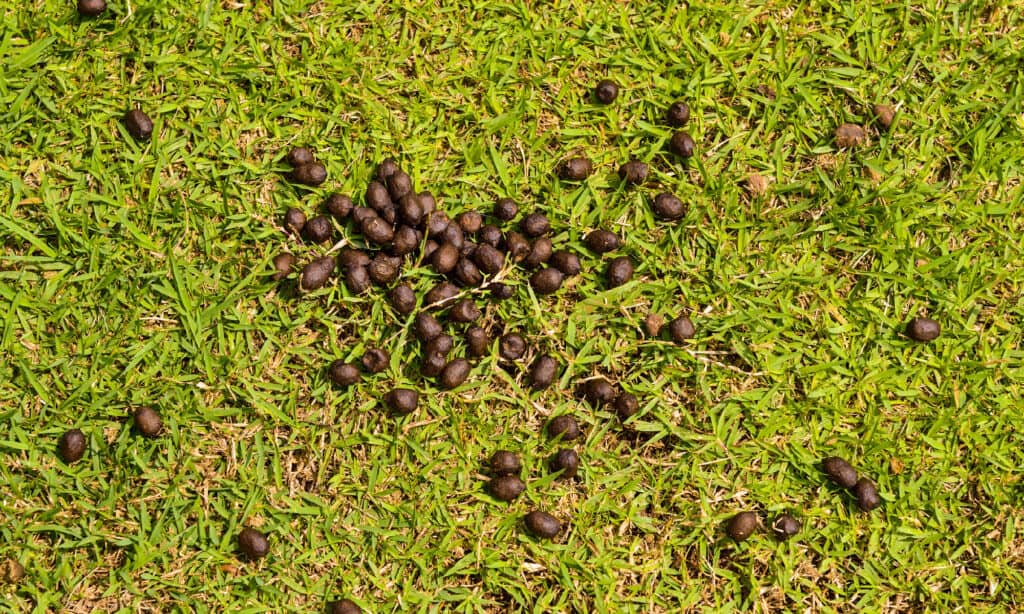
Sheep droppings have a very firm consistency and vary between a very light and dark brown.
©iStock.com/Teen00000
While sheep can be found in the wild in the mountains and deserts, most sheep in the world are kept as livestock on farms. The various sheep species can be found in Asia, Africa, North America, and Europe. Sheep are generally docile animals. However, these animals are known to be very afraid of things they do not know and because they see humans as predators, they are naturally afraid of humans. But it is still very common for sheep to be around humans.
As such, sheep do not have much of a choice and poop around people a lot. Usually, sheep droppings have a very firm consistency and vary between a very light and dark brown. Sheep poop easily breaks apart and it is rare for sheep poop to be of a different consistency. If sheep poop has a different consistency or has a different color, there is something wrong.
Mushy sheep poop is also an indicator of a change in water intake. Soft sheep poop is an indicator that the sheep has an infection or that the animal’s diet contains too much protein. It could also mean that the food is going through its system too quickly. For lamb (baby sheep), they could stop eating altogether if they notice a change in their food.
What Do Sheep Eat?
Like cows, sheep are ruminant animals. This indicates that they consume nutrients from plants by chewing their meal, spitting it back up as cud, further breaking it down, and then reentering their digestive tract. This process might seem long and tedious, but it allows them to get the most nutrients from their food. Although sheep will eat a wide variety of things, they favor items that they can consume quickly. However, some foods can be a little picky for sheep. For instance, instead of choosing softer plants that need less chewing or are easier to digest, they will intentionally pick out woody ones. Other things sheep like to eat include Alfalfa, sunflower seeds, oats, and dandelion.
Surprisingly, although sheep are primarily domesticated, they still follow some form of social hierarchy, going only where their leader goes, especially when in search of food. Sheep are strict herbivores and feed on grasses, plants, legumes, and forbs. It is also interesting to note that sheep may live only on pasture grass, particularly timothy and ryegrass, making them self-sufficient animals throughout the warmer months.
Is There Any Difference Between Sheep Poop and Goat Poop?
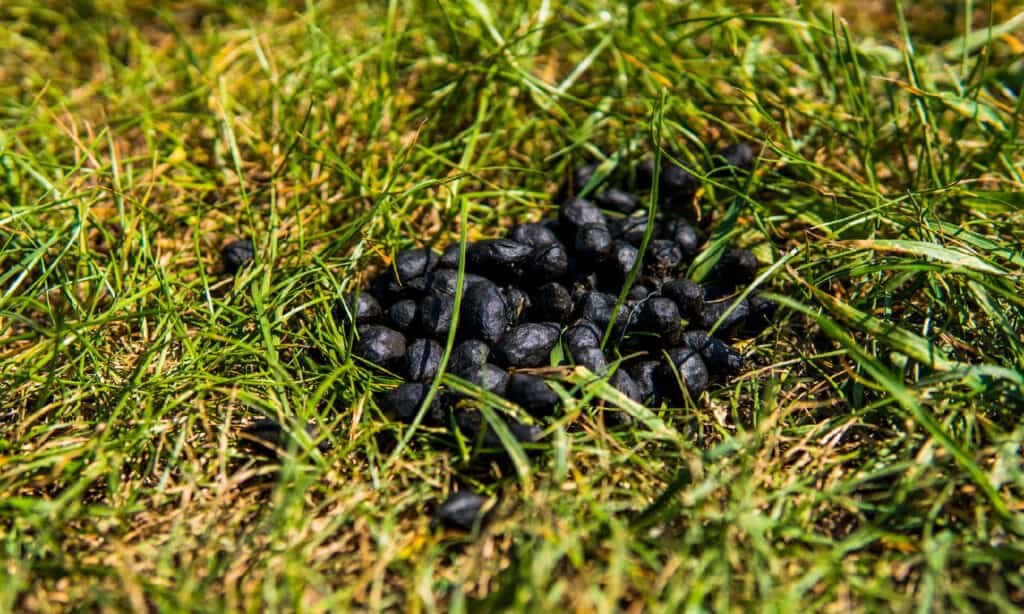
Normal goat droppings look like oval-shaped pellets with solid consistency.
©iStock.com/Volodymyr Shtun
Contrary to popular belief that a goat would eat almost anything, goats have very sensitive digestive systems, although they do enjoy exploring the world using their mouths. However, like sheep, they are also ruminant animals. Normal goat droppings look like oval-shaped pellets with solid consistency. Like sheep poop, goat poop is also naturally brown and not mushy.
There is not much difference between goat and sheep poop. Both species have almost identical diets, and as mentioned earlier, they are both ruminant animals meaning their foods go through similar digestive processes.
Although very similar, goats and sheep have several differences. Unlike sheep which are grazers, goats are browsers. This implies that, in contrast to sheep, which like to graze on the grass close to the ground, they frequently select leaves, shrubs, vines, and weeds, usually at the tops of plants higher off the ground.
Is Sheep Poop Harmful?
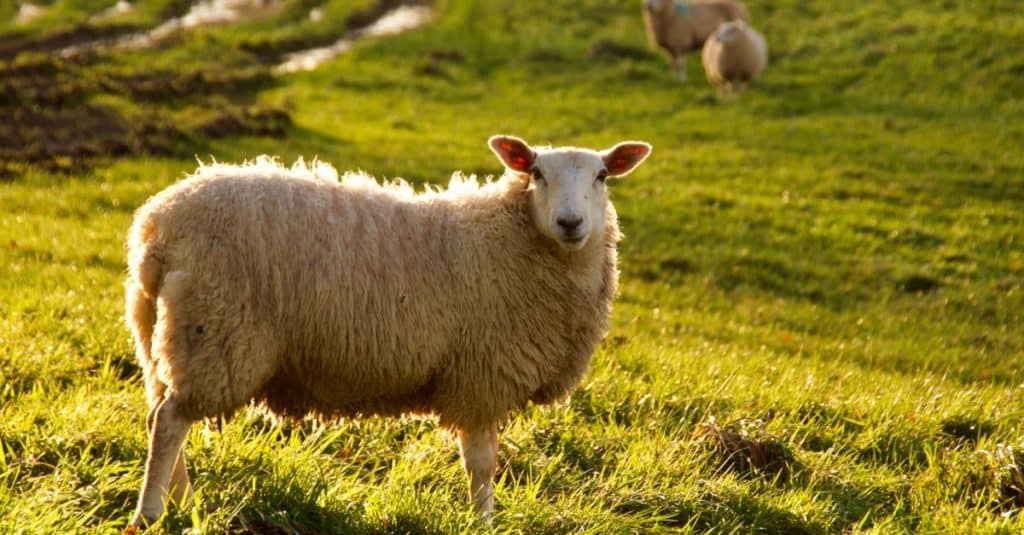
Sheep poop contains chemicals that are poisonous to dogs and some other animals.
©Jud goodwin/Shutterstock.com
Because sheep spend a lot of time around humans, not caring where they go about their “business,” it is essential to know whether or not sheep poop is harmful to humans and other animals living around them.
Although there are no known adverse effects of sheep poop on humans, it can be very dangerous for dogs as sheep poop contains chemicals that are poisonous to dogs and a few other animals. Also, sheep have proven to be unaffected by the consumption of fireweed, a plant native to Africa that affects cattle and horses. Although they are not affected by these plants, it has been found that sheep are the primary source of the plant’s spread through poop since not all the plants are thoroughly digested in the sheep’s stomach.
Up Next:
Sheep Lifespan: How Long Do Sheep Live?
What Do Sheep Eat? 15 Foods in Sheep’s Diet
The photo featured at the top of this post is © iStock.com/MarjanVisser
Sources
- Science News Explores, Available here: https://www.snexplores.org/blog/eureka-lab/sheep-poop-may-spread-poisonous-weed
- Savage Hart Farm, Available here: https://savagehartfarm.com/sheep-pp/
- Farm Progress, Available here: https://www.farmprogress.com/livestock/spot-livestock-problems-early-checking-manure-daily
Thank you for reading! Have some feedback for us? Contact the AZ Animals editorial team.



